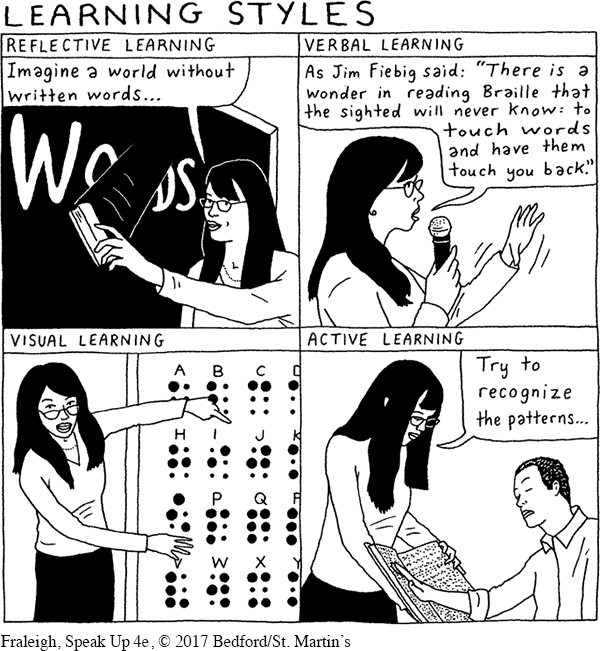Appeal to Different Learning Styles
Select supporting materials that appeal to different audience members’ learning styles. Active learners learn best by “doing something active” with the material that is being presented, and reflective learners “prefer to think about it.”22 Visual learners, by contrast, tend to “remember best what they see,” whereas verbal learners tend to “get more out of words—
244

To appeal to this range of learning styles, use a combination of supporting materials throughout your speech. For instance, to clarify a point for verbal learners, you could use a spoken definition along with a vivid analogy; to appeal to visual learners, you also could incorporate visual aids (see Chapter 14). One landmark study found that students retained 26 percent of what they heard and 30 percent of what they saw, but those totals increased to 50 percent for information they heard and saw.24 If you are delivering a multimedia presentation (with various forms of supporting materials, such as video clips, PowerPoint slides, and illustrations), audience members will be more likely to grasp the material if you combine words and images.25 And finally, asking thought-
245
246
How does this work in practice? To appeal to diverse learning styles in a speech on abstract art, for example, you might begin by defining abstract art and comparing it to other related art forms, such as nineteenth-
To combine a verbal and visual explanation, take the example of a speech about business models for food trucks. You could show a video clip of a truck on a busy day while explaining how the truck is operating efficiently.
247
To appeal to active learners, you can give audience members a chance to do something with your supporting materials. For instance, after using a narrative to help her listeners understand how bees fly, one student invited audience members to manipulate their arms to simulate the motion of bees’ wings.